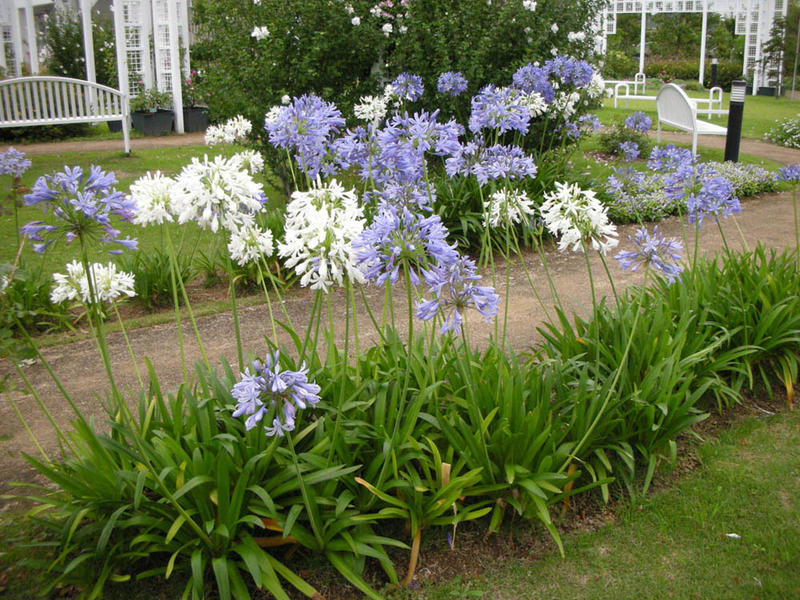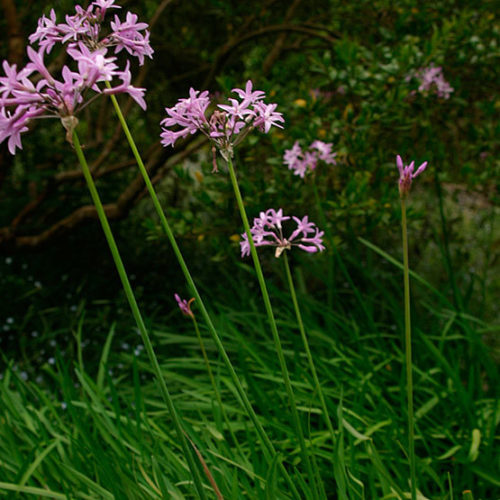Usual Agapanthus Troubles and Exactly How to Fix Them
Usual Agapanthus Troubles and Exactly How to Fix Them
Blog Article
Unleashing the Secret to Effective Agapanthus Growing: Advice for a Flourishing Yard
In the world of horticulture, cultivating agapanthus effectively calls for a calculated method that incorporates various elements of plant care. By understanding the nuances of agapanthus growing, one can develop an environment where these plants grow and flower perfectly.
Planting Agapanthus: Finest Practices
When planting Agapanthus, correct soil prep work is vital for making sure successful development and advancement of these beautiful blossoms. Agapanthus, commonly referred to as Lily of the Nile or African lily, flourishes in well-draining dirt with a slightly acidic to neutral pH degree - Agapanthus. Prior to planting, it is vital to amend hefty clay dirts with organic issue such as garden compost or peat moss to boost drainage and give vital nutrients for the plants
To grow Agapanthus, choose a place that obtains full sunshine to partial color, as this will promote healthy and balanced growth and bountiful blooming. Dig an opening twice the diameter of the plant's root ball and place the Agapanthus at the exact same depth it was previously expanding. Delicately backfill the hole with soil, pushing down securely to get rid of any kind of air pockets around the origins.
Water the freshly grown Agapanthus extensively and proceed to maintain the dirt equally moist, particularly throughout the plant's energetic growing season. Agapanthus. Applying a balanced plant food once a month can further support the plant's growth and flowering. By following these best practices for planting Agapanthus, you can develop a magnificent display screen of these fascinating flowers in your garden
Ideal Dirt Issues for Agapanthus
For optimum development and blooming success of Agapanthus plants, guaranteeing the soil conditions are optimal is important. Agapanthus flourishes in well-draining soil with a somewhat acidic to neutral pH level varying from 6.0 to 7.0. This kind of soil enables sufficient water drain, stopping waterlogging which can cause root rot. To enhance dirt drain, consider adding raw material such as garden compost or peat moss when preparing the planting site. In addition, Agapanthus likes dirt that is abundant in nutrients, so integrating a balanced fertilizer during the expanding season can promote healthy and balanced growth and lively blossoms.

Watering and Fertilizing Tips
To guarantee healthy and balanced development and dynamic flowers, proper watering and feeding strategies are important for effective Agapanthus growing. Agapanthus plants profit from regular watering, especially during the expanding season.
When it concerns feeding Full Report Agapanthus, a well balanced fertilizer with equal components nitrogen, phosphorus, and potassium can be applied in the spring to advertise healthy growth and flowering. Slow-release fertilizers are optimal for offering nutrients progressively over an extensive duration. Avoid over-fertilizing, as this can bring about extreme foliage development at the cost of blooms.
Furthermore, including natural matter like garden compost into the soil can enhance nutrient degrees and improve soil framework, aiding in the overall wellness of the Agapanthus plants. By complying with these watering and feeding pointers, gardeners can guarantee their Agapanthus plants flourish and create sensational displays of flowers.
Trimming and Deadheading Techniques
Proper trimming and deadheading techniques play a crucial function in keeping the health and wellness and aesthetics of Agapanthus plants, matching the crucial techniques of watering and fertilizing for effective growing. Trimming Agapanthus entails eliminating invested blossom heads, yellowing or dead fallen leaves, and total shaping of the plant to promote much better development. Deadheading, the process of getting rid of faded flowers, not only improves the plant's published here look yet likewise urges more blooming.
When deadheading Agapanthus, it is a good idea to trim off the flower stem at the base utilizing sharp, tidy shears. This process redirects the plant's power from seed manufacturing back right into origin and foliage growth, advertising a much healthier and more durable plant. Regular deadheading can prolong the growing period of Agapanthus and avoid self-seeding, which can cause overcrowding.
In terms of trimming, Agapanthus usually take advantage of a light trim after blooming to clean up the plant and motivate fresh growth. Cutting back the spent flower stems and getting rid of any type of broken or dead foliage aids keep the plant's vitality and general look. Nevertheless, it is vital to prevent cutting into the crown of the plant, as this can weaken its wellness.

Protecting Agapanthus From Pests and Diseases
Applying reliable parasite and condition administration approaches is crucial to safeguarding the wellness and vigor of Agapanthus plants in growing. Agapanthus are normally hardy plants, yet they can still come down with numerous insects and conditions if not properly looked after. One common parasite that impacts Agapanthus is the Agapanthus borer, a caterpillar site that passages right into the plant, causing damages to the leaves and blossoms. To avoid infestations, normal assessment of the plants is necessary. If borers are discovered, they can be manually gotten rid of, or insecticidal soap can be used as a control measure.
In addition to bugs, Agapanthus are at risk to diseases such as origin rot and fungal leaf places. These concerns can frequently be stopped by making certain correct water drainage and avoiding overwatering. Affected parts of the plant ought to be immediately eliminated to prevent further spread if signs of illness show up. Fungicides may likewise be utilized as a therapy measure, complying with the maker's directions very carefully. By remaining attentive and attending to parasite and condition concerns without delay, garden enthusiasts can aid their Agapanthus thrive and prosper.

Final Thought
In conclusion, effective cultivation of agapanthus calls for correct planting techniques, ideal soil problems, sufficient watering and fertilizing, routine trimming and deadheading, and defense from conditions and insects. By complying with these pointers and methods, gardeners can make sure a prospering garden full of lovely agapanthus blossoms. Agapanthus. Bear in mind to maintain consistent treatment and interest to information to advertise the health and wellness and long life of these sensational plants
When growing Agapanthus, appropriate soil prep work is vital for guaranteeing successful development and advancement of these lovely blossoms.Water the freshly planted Agapanthus thoroughly and continue to keep the soil equally moist, particularly during the plant's energetic growing period.For optimum growth and flowering success of Agapanthus plants, guaranteeing the dirt problems are excellent is essential. When hair transplanting or growing Agapanthus, make certain the dirt is well-prepared to supply the essential foundation for the plants to establish themselves successfully. One common parasite that impacts Agapanthus is the Agapanthus borer, a caterpillar that passages right into the plant, creating damages to the flowers and leaves.
Report this page